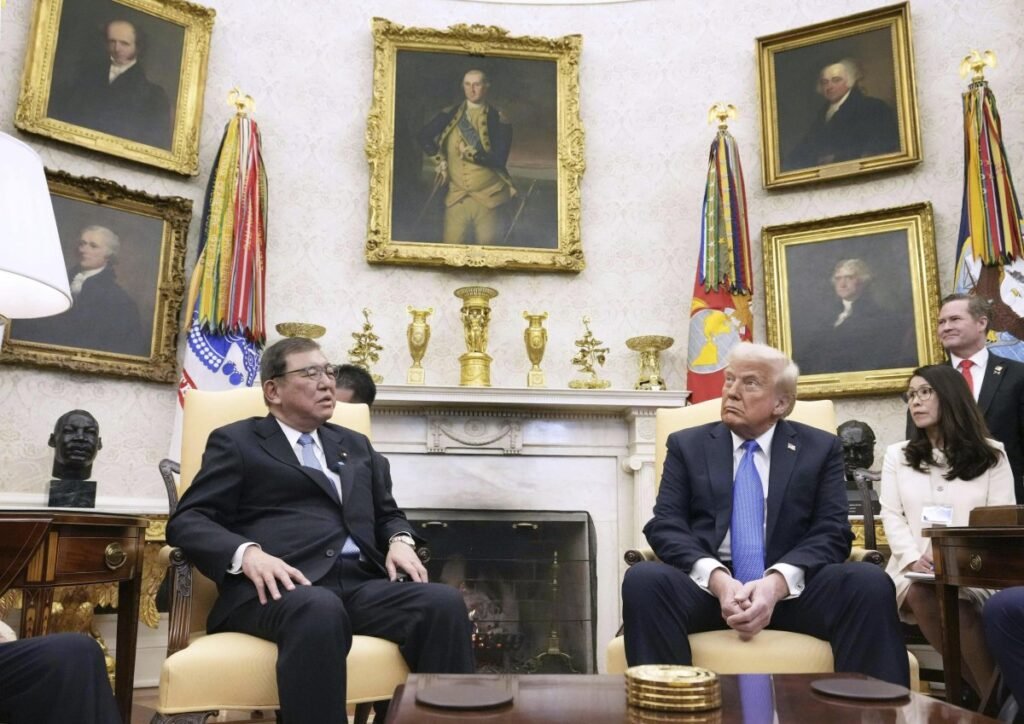China released photos showing its aircraft carriers conducting “training exercises” in the western Pacific beyond the first island chain, which is intended to keep its navy in check.
“The training complies with relevant international law and practice, and is not targeted at specific countries or entity,” a Chinese navy spokesperson said in a statement on Tuesday.
Why It Matters
The first island chain—comprising Japan, Taiwan and the Philippines—is one of three Pacific island defense lines established by the United States, utilizing its own territories as well as those of its allies and partners, with the goal of restricting China‘s naval activities.
The Chinese navy, the largest in the world by hull count, deployed its aircraft carriers—CNS Liaoning and CNS Shandong—to the eastern side of the first island chain simultaneously for the first time over the weekend, challenging the U.S.’s naval dominance in the region.
Meanwhile, the Liaoning became China’s first aircraft carrier to be spotted operating in waters east of the second island chain, which stretches from Japan to New Guinea—north of Australia—via Guam, the westernmost U.S. territory that serves as a military hub.
What To Know
Senior Captain Wang Xuemeng, a spokesperson for the Chinese navy, confirmed in the statement that both the Liaoning and the Shandong had been deployed to the western Pacific Ocean in recent days to test their capabilities in “far-sea defense and joint operations.”
The spokesperson said the dual aircraft carrier deployment was a “routine arrangement included in the annual training plan,” which sought to improve the ability of the Chinese navy—officially known as the People’s Liberation Army Navy—to fulfill its missions.

Chinese aircraft carriers CNS Liaoning, top, and CNS Shandong, bottom, conducting flight operations with J-15 fighter jets in the western Pacific Ocean in early June.
Chinese military
Official photos show both Chinese aircraft carriers launching J-15 fighter jets at an undisclosed location in the western Pacific Ocean during both day and night. A supply ship attached to one of the aircraft carriers was seen providing supplies to a destroyer.
However, it remains unclear whether the Liaoning and the Shandong were operating in the same vicinity. They were last tracked underway on the eastern and western sides of the second island chain, respectively, according to a map published by Newsweek.
Japan, a U.S. ally that tracks and monitors the Chinese navy, has made a “proper request” to China through diplomatic channels regarding the activities of the Chinese aircraft carriers, Japanese Defense Minister Gen Nakatani said at a news conference on Tuesday.

The Chinese supply ship CNS Hulunhu providing supplies to the destroyer CNS Wuxi in the western Pacific Ocean in early June.
Chinese military
“China intends to improve the operational capability of its two aircraft carriers and its ability to conduct operations in distant seas and airspace,” the minister said, adding that Japan had both the will and the ability to deter unilateral attempts to change the status quo by force.
What People Are Saying
Lin Jian, a spokesperson for the Chinese Foreign Ministry, said on Tuesday: “Let me reiterate that Chinese naval vessels’ activities in those waters are fully consistent with international law and international practices. Our national defense policy is defensive in nature. We hope Japan will view those activities objectively and rationally.”
Japanese Defense Minister Gen Nakatani said on Tuesday: “In any case, the Ministry of Defense and the Self-Defense Forces will continue to closely monitor the movements of the Chinese Navy vessels, including these two aircraft carriers, and will take all possible measures to conduct surveillance activities.”
What Happens Next
China’s dual aircraft carrier deployment comes as two U.S. aircraft carriers—USS Nimitz and USS George Washington—are underway in separate areas of the western Pacific Ocean.

A Chinese J-15 fighter jet taking off at night from the flight deck of an aircraft carrier in the western Pacific Ocean in early June.
Chinese military







